Are you tired of gardens that demand constant watering, weeding, and chemicals? Then consider adding native plants to your garden. You’ll quickly begin to appreciate how they contribute to healthier, more resilient outdoor spaces. Not only do they typically require less maintenance, but they also help save water, protect and enrich the soil, and keep insect communities in balance. They do this in often fascinating ways, for example deploying deep root systems or connecting to fungal networks that support the larger plant community.
In this article, we’ll explore the advantages of adding native plants, their impact on biodiversity and wildlife habitat, and how to choose and care for them in your garden. Get ready to transform your outdoor space into a thriving, bird- and pollinator-friendly haven!
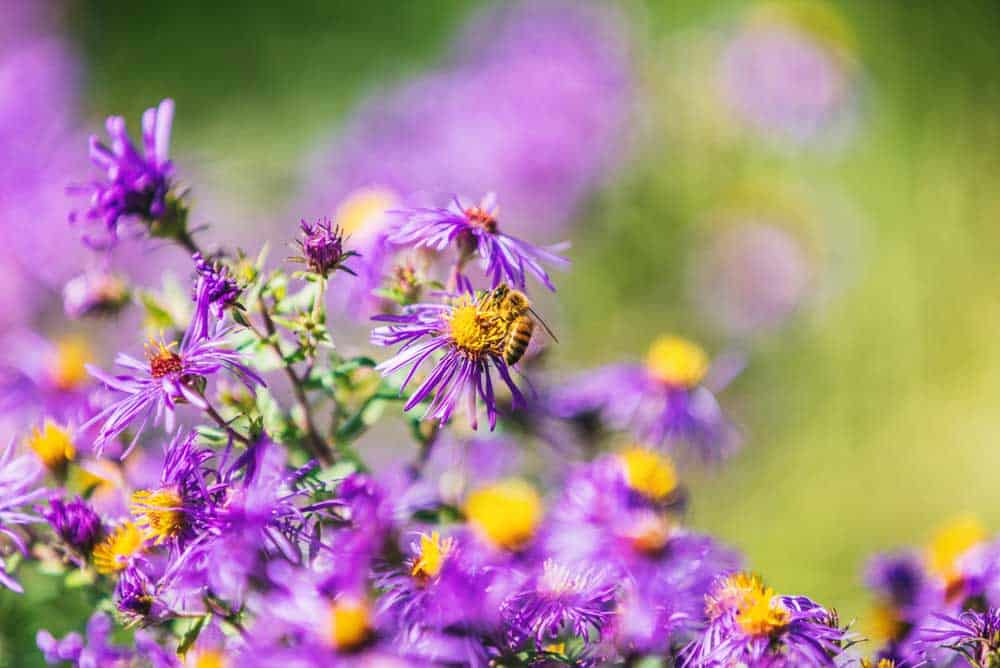
Key Takeaways
- Native plants offer reduced water use, less intense maintenance, natural pest control, and environmental sustainability. They can also save money by requiring fewer expensive inputs of chemicals and treatments, and by lasting longer than non-native plants.
- Adding native plants to a garden or outside space usually involves assessing the site and local environmental conditions, determining which communities of plants will thrive in your location, and visiting local nurseries and non-profits to see live plants.
- Caring for a native plant garden starts with proper planning and plant choice, understanding the progression of plant needs in year one, two and three, and usually watering and weeding, especially early on.
The Advantages of Native Plants
Native plants, having co-evolved with other plant and animal species in specific regions, provide incredible benefits for gardeners and the environment alike. Envision minimized maintenance time and effort, coupled with bolstered local ecosystems. The adaptability of these plants to local climate and soil conditions often means they require less upkeep compared to non-native counterparts, and are more resilient to weather extremes and sudden changes in conditions.
Why add native plants to your landscape? To start, they offer several specific advantages:
- They act as natural pest controllers by attracting beneficial insects and birds that prey on pests and repel alien species, eliminating or greatly reducing the need for chemical treatments and promoting a healthier garden and environment.
- They usually require much less water compared to traditional landscape choices like non-native turf grasses, making them a more sustainable choice for landscaping and gardening.
- They save time and effort by growing in balance with other plants, and having beneficial relationships with insects, birds and other animals.
- They contribute to the overall well-being of our planet, and provide healthy, chemical-free environments for play and relaxation.
- They reduce erosion and improve soil health, promoting a balance of microbes and fungi that help provide all plants in the landscape with essential nutrients. (Healthy soil also stores water more efficiently.)
- They are beautiful!
Low Maintenance
One great benefit of native plantings is their typically low maintenance requirements. These plants have adapted to local conditions, making them more resilient to pests, diseases, and encroachment by alien species. As a result, they require minimal upkeep once established, and can recover quickly from insect activity, unlike non-native plants that often demand constant attention and intervention and don’t typically resistance damage by local insects.
The resistance of native plants to pests and diseases means they need fewer chemical treatments, such as insecticides, herbicides, and fungicides. This not only saves you time and money but also reduces the environmental impact of your garden.
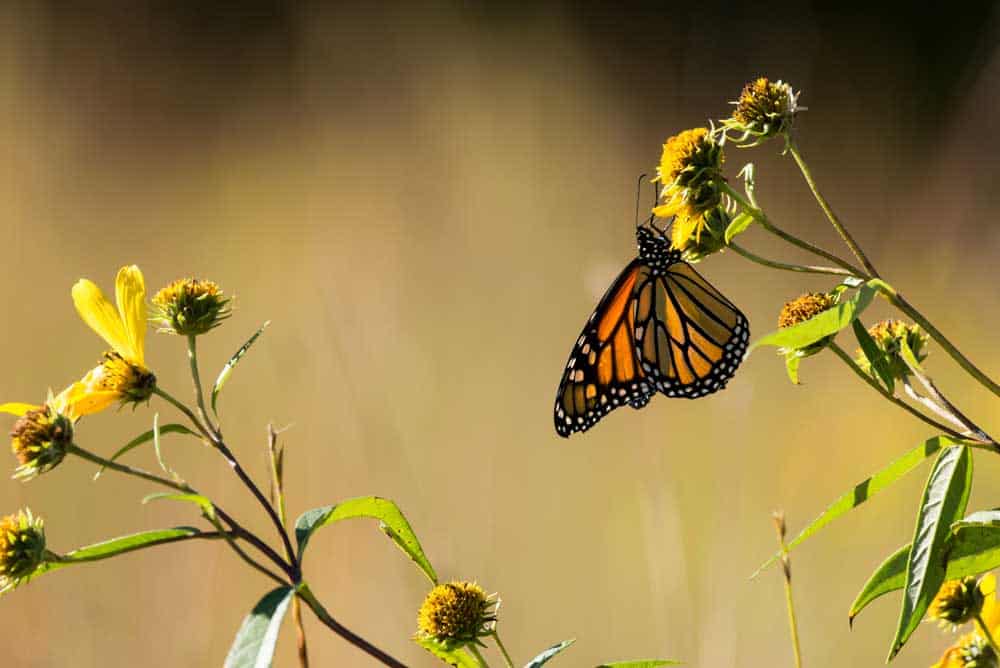
Natural Pest Control
Native plants play an important role in natural pest control, thanks to their ability to attract beneficial native insects and birds, providing a natural defense against pests and diseases. By including native plants in your garden, you can reduce or even eliminate the need for pesticides, which can harm human health and the environment.
Many native plants, such as Zizia, Eupatoriums, and Eryngiums, possess natural chemical insect repellants that help them resist and recover from insect damage.
Water Conservation
Even if your goal is only to cut your water bill, native plants can make a huge difference. Water conservation is a critical issue in today’s world, and native plants are an excellent choice for those looking to make a positive impact. Native plants have adapted to the normal precipitation levels of the region, meaning they typically require less water than non-native plants. In addition, their root systems and special adaptations can allow them to extract and retain water for extended periods, further reducing the need for using supplemental water.
Watering an average-sized lawn (about 1/3 of an acre) typically costs between $20 to $40 per month, but this can be much higher in areas with high water rates or during drought conditions. To reduce this cost, many homeowners are turning to native plants and grasses that require less water while playing a key role in wildlife food webs.
By replacing non-native plants with native ones, you can significantly reduce the overall water demand of your outdoor living spaces, contribute to water conservation efforts, and help preserve local water resources. In a time when water scarcity is becoming an increasingly pressing concern, choosing native plants is a responsible and eco-friendly decision to save water everywhere.
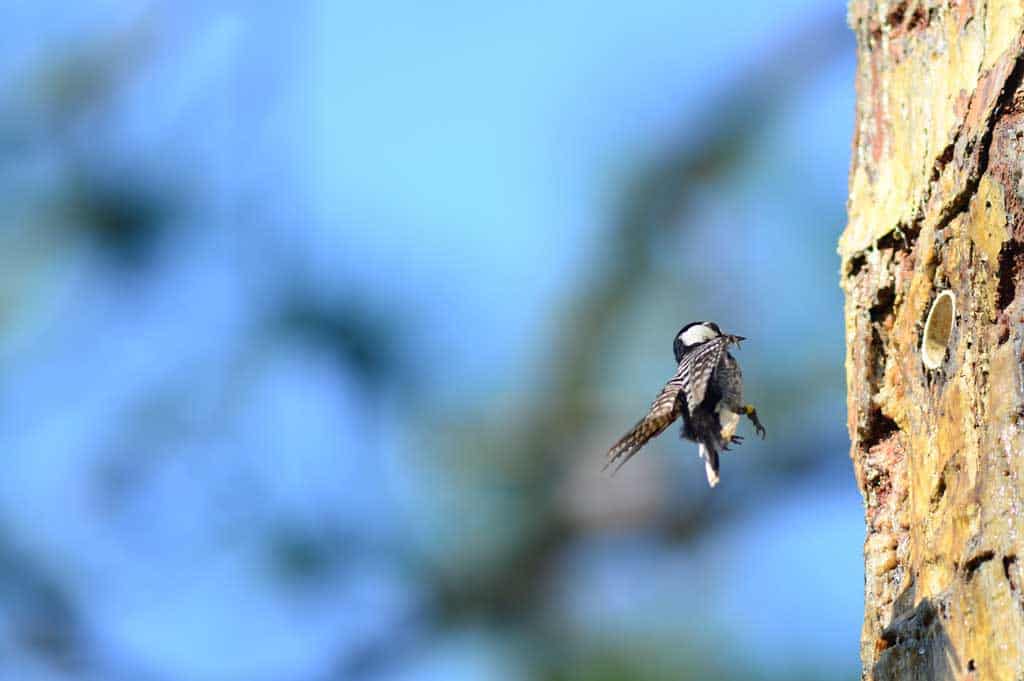
Enhancing Biodiversity and Native Wildlife Habitat
Native plants not only benefit gardeners but also contribute to the preservation of biodiversity and wildlife habitat. By providing a natural habitat for local wildlife, native plants play a crucial role in sustaining healthy populations of butterflies and other insects, as well as birds.
Beneficial pollinators and insects, local and migratory birds, and other animals have co-evolved with and often have “specialist,” or unique interdependent, relationships with native species. When you plant native species in your garden, you’re not only creating a beautiful space but also supporting local species and relationships that occur naturally in healthy outdoor living spaces.
Preserving Biodiversity
Biodiversity, defined as the number and variety of living things in a specific region, is essential for maintaining healthy ecosystems. Native plants are integral to preserving biodiversity, as they support a wide range of butterflies, moths and other insects, birds, and other wildlife. By providing essential resources such as nectar, pollen and foliage that provides necessary nutrients, native plants can support up to 15 times as many caterpillars as non-native plants, which are a crucial food source for birds.
By planting native plants in your garden or green spaces, you can:
- Help preserve biodiversity
- Support local insects and birds
- Ensure more diverse and resilient ecological outcomes
- Contribute to the overall health and beauty of your garden, making it a thriving, people-friendly space
- Help repel alien species of plants and animals
Providing Food and Shelter
Native plants play a vital role in the food web and providing shelter for local wildlife, including native bees, butterflies, pollinators, and birds. Native plants provide habitat for a diverse range of invertebrates, which in turn meet the needs of nearby wildlife populations and helps sustain their biodiversity as well.
Native plants that attract native bees and other pollinators, such as Baptisia australis (blue wild indigo) and Liatris scariosa (blazing star), which are particularly beneficial for pollinators, provide essential nectar and pollen sources, as well as serving as host plants for their larvae. In turn, these larvae provide essential nutrients for birds and their nestlings.
Preventing Invasive Species
Invasive species can cause significant harm to local ecosystems, contributing to a decline in native plants and birds, decreased biodiversity, and habitat loss. Native plants, on the other hand, help prevent the spread of invasive species by competing for resources, filling empty spaces, and restoring disturbed or degraded soils and landscapes. For example, a matrix of native grasses is an excellent way to fill in spaces above and below the ground to crowd out potential competition from exotic non-natives.
By choosing to plant native species in your outdoor spaces, you’re not only supporting local ecosystems but also helping to protect them from the potentially devastating effects of invasive plants and other alien species. It’s a choice that contributes to the overall health and sustainability of our planet, while also creating a beautiful, lower-maintenance garden for you to enjoy.
Choosing the Right Native Plants for Your Garden
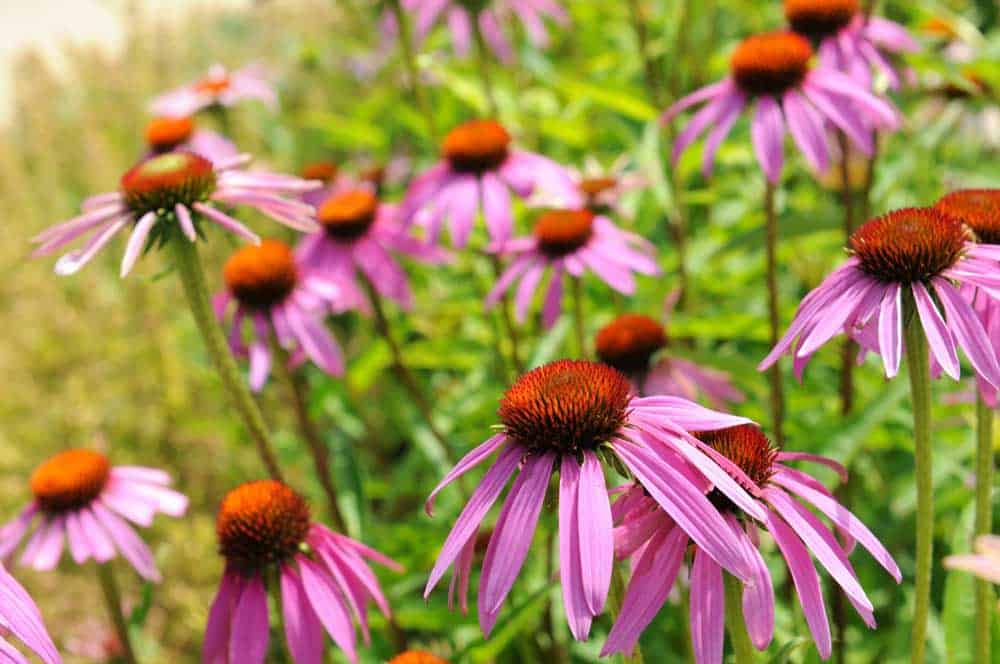
Selecting the right native plants for your garden is essential to ensure they thrive and provide the maximum benefits for both you and the environment. To help you make the best choices, it’s important to understand your local and site conditions, learn more about the plants themselves from this website and by visiting nurseries and natural areas, and consult landscape designers or other experts for advice where it is an option.
Assessing Local Conditions
To choose the best native plants for your garden, it’s crucial to assess local conditions such as soil type, sunlight exposure, and climate. Native plants provide the best outcomes when they are matched to their preferred moisture, sunlight, and soil requirements. Understanding these factors will help you select plants that will thrive in your specific environment and provide the benefits you’re seeking.
There are several ways to assess your landscape’s soil type, such as conducting a pH test or observing the soil texture. Similarly, sunlight exposure can be measured using various techniques, including shade mapping or using a sun and shade analyzer app.
Visiting Nurseries and Natural Areas
Visiting local nurseries and natural areas can provide invaluable insight into native plants and their natural habitats. This hands-on experience can help you understand the specific requirements of different native plants and inspire you with ideas for your own garden design, including which types of plants grow naturally together in the local landscape, and which benefits native plants provide.
When visiting a nursery for native plants, consider factors such as the nursery’s reputation, the information provided on plant tags, and the professionalism of nursery staff. If you are unsure about the native status of a plant, or a plant label doesn’t provide the information you need, find someone at the nursery with expertise in native plants. There’s almost always one person at a local nursery who knows about native plants, their roles, and how to care for them.
Observing native plants in their natural habitats can also help you gain a better understanding of their growth habits and how they interact with their environment, aiding you in making informed choices for your garden.
Consulting Landscape Designers
If you want to do less planning yourself or are just unsure of your knowledge, consulting with landscape designers or other experts can help you choose the best native plants for your garden, taking into consideration factors such as:
- soil type and health
- light conditions
- moisture levels
- the specific microclimate of your site
- existing plants and trees
- existing irrigation
- species interactions
- aesthetic values
These professionals can offer advice on proper plant selection and maintenance, helping you create a stunning, lower-maintenance native plant garden that benefits both you and the environment.
In addition to their expertise in plant selection, landscape designers can also provide guidance on:
- Designing a wildlife-friendly garden
- Incorporating native plants into your overall landscape design
- Addressing common pests and diseases using eco-friendly methods
Incorporating Native Plants into Your Garden Design
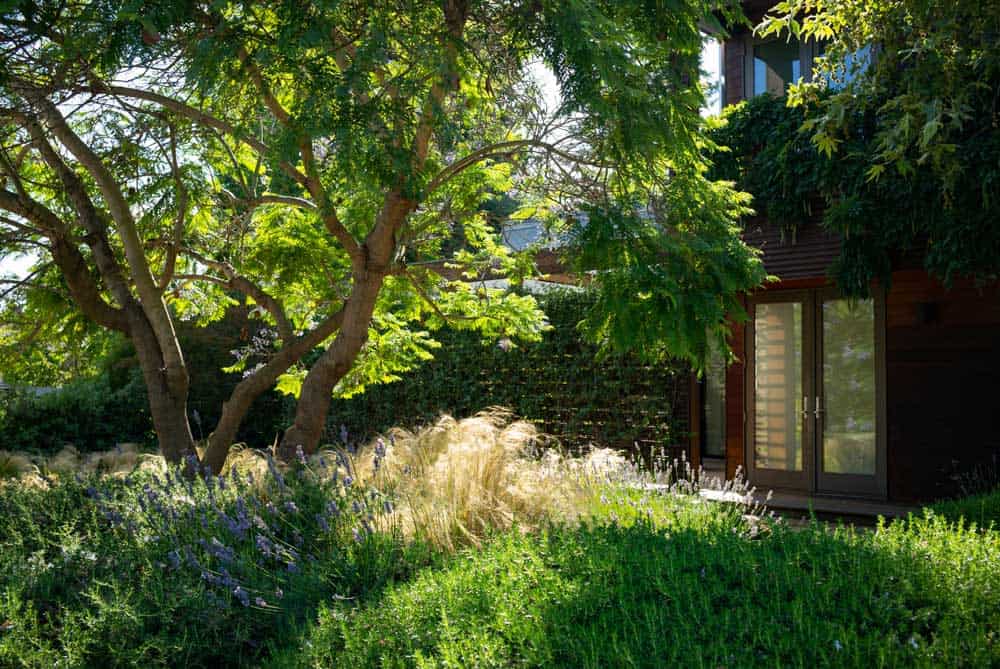
There are numerous ways to include native plants in your outdoor space, from replacing traditional turf grasses to creating wildlife-friendly spaces and using native plants in containers and small spaces.
Replacing Turf Grasses
One of the simplest ways to incorporate native plants into your landscape design is by replacing traditional turf grasses and large lawns with native plants. This not only reduces maintenance and the use of pesticides and fertilizer but conserves water and supports local ecosystems by providing habitat for native wildlife.
And you don’t have to do it all at once. Nor do you need to start by removing your favorite exotic plants. You can begin by replacing a small section of your yard, even 5×5 or 10×10 feet, with a locally appropriate mix of native species, and learn as you go!
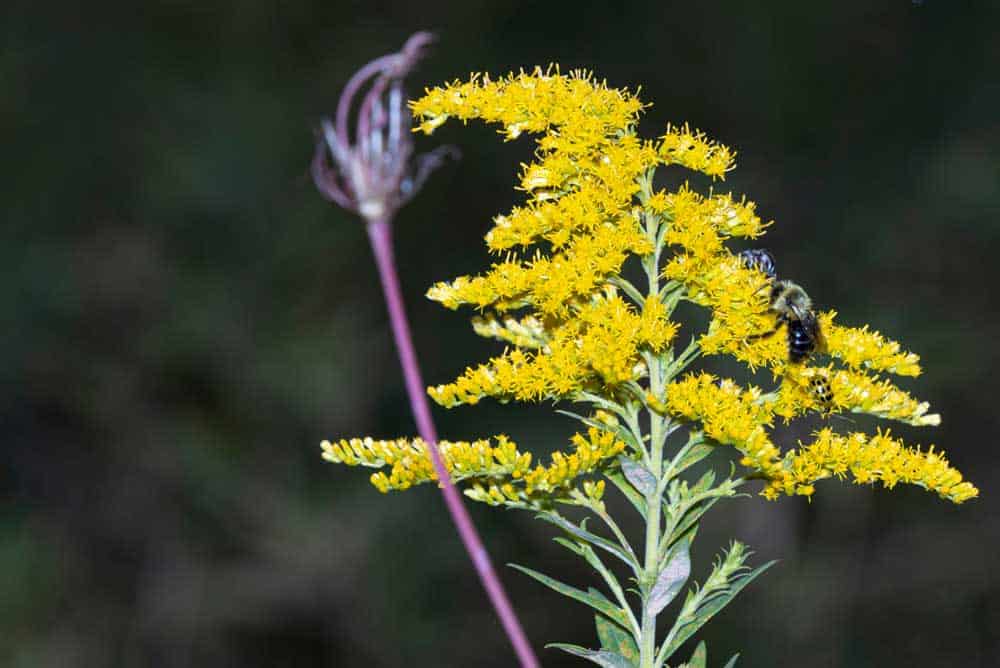
Some examples of native plants that can replace turf grasses in various climate zones include:
- Gray Ice Plant
- Low-growing native grasses and sedges
- Lily Turf
- Other mixes of native plant species
There is increasing interest in replacing turf grass because of its high water consumption, high maintenance requirements, and its neutral or negative impact on the ecosystem. Look for suggestions from your regional botanic garden or university, who may be researching alternatives.
Creating Wildlife-Friendly Spaces
Creating wildlife-friendly spaces that provide habitat and food web support in your garden is another excellent outcome from incorporating native plants in your landscape design. By planting plants that provide food, shelter, and nesting sites for local wildlife, you can create a habitat that supports healthy populations of birds and native butterflies and other beneficial insects.
To arrange native plants in your landscape to create wildlife-friendly spaces, consider the following steps:
- Select a mix of plants that are native to the region and offer food specific to birds and other native wildlife.
- Plan for a diverse habitat in the form of structure and behavior (e.g. plant combinations that provide flowers and nectar through most months of the year).
- Decide if you want to start with live plants (often dependent on availability) or seeds. The space planning and design process for seeds is different from that for container or bare root plants.
- Understand proper spacing for both live plants and seeds, as well as expected weeding demands.
- Assess and learn! One of the great benefits of native plant gardens is that they will teach you what you need to know. And we are always learning something!
With the right combination of native plants, you can create a beautiful, wildlife-friendly garden that supports local ecosystems and adds interest to your outdoor space. To achieve this, buy native plants that are well-suited to your specific location’s moisture levels and soil conditions. If it suits your taste better, grow native species alongside non-native but non-invasive plants for a balanced and diverse garden.
Using Native Plants in Containers and Small Spaces
Even if you have limited gardening space, you can still enjoy the benefits of native plants by using them in containers and small spaces. This allows you to experience the lower-maintenance, eco-friendly advantages of native plants, even in urban or space-constrained environments.
Some water plants, such as duck potato and pickerel weed, are suitable for container growth, as are vines like Trumpet Honeysuckle (Lonicera sempervirens).
Caring for Your Native Plant Garden
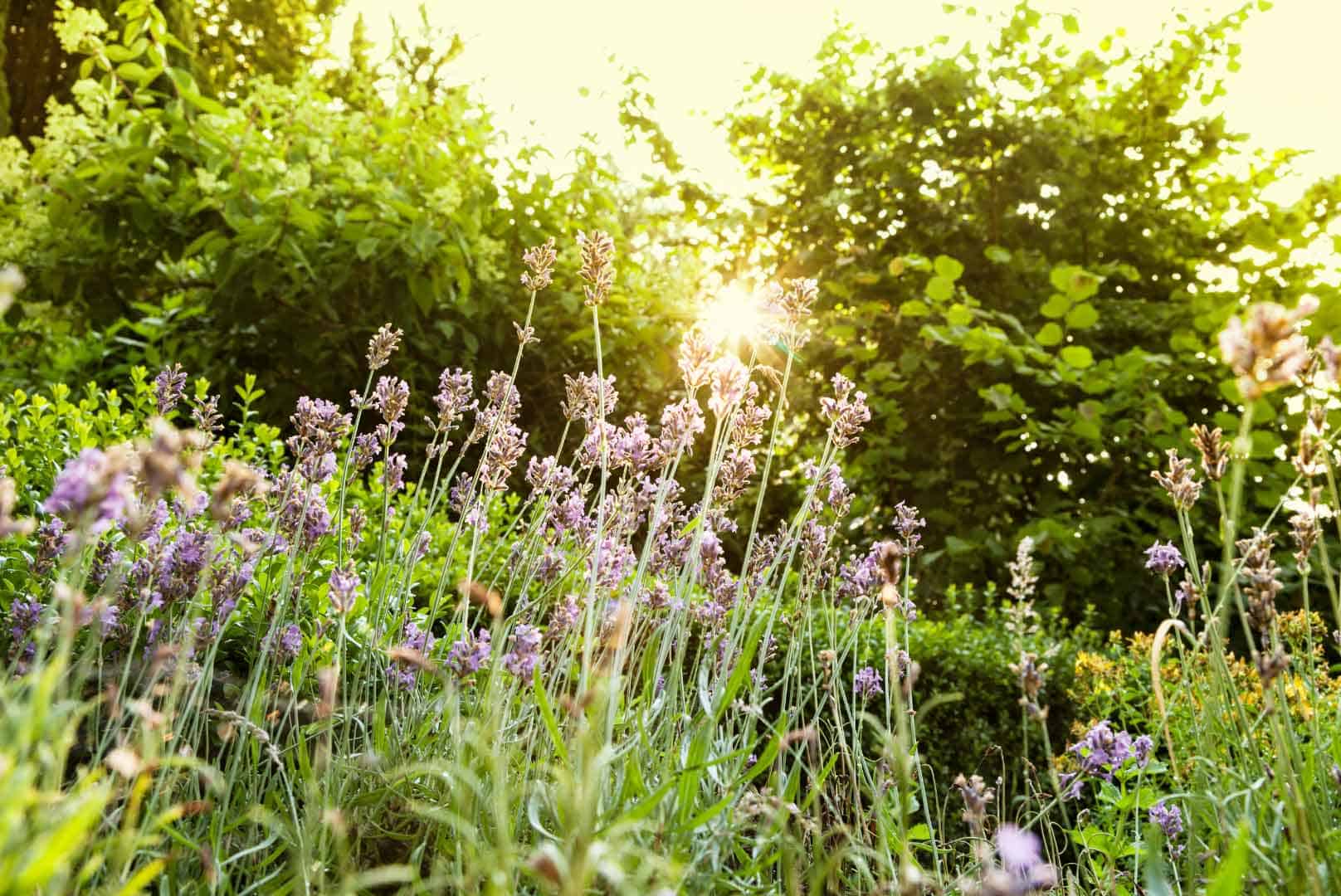
After integrating native plants into your garden design, proper care is key to ensure their thriving growth and maximized benefits for you and the environment. In this section, we’ll discuss tips for caring for your native plant garden, including pruning and trimming, watering, and fertilizing, and monitoring for pests and diseases.
By understanding the specific needs of your native plants and providing appropriate care, you can maintain a healthy, vibrant outdoor spaces that support local ecosystems and offers a beautiful, lower-maintenance space for you to enjoy, without the use of pesticides and other chemicals.
Pruning and Trimming: Only with Care
Requirements for pruning and trimming are typically lower for a native plant garden, since while they help maintain the plants’ appearance, they may also diminish the services the plants provide to beneficial insects and animals. For example, many bees lay their eggs in the stems of perennial plants, and removing vegetation often means unintentionally removing the hard-to-see eggs or larvae of important native butterflies and moths.
Many birds benefit from the ground cover provided by woody perennials and shrubs in winter, so sometimes waiting to trim until just before new growth happens in the spring is the best strategy.
Watering and Fertilizing
Watering your native plant garden, especially with new plants, is often key to their long-term health and vitality. Note the water requirements of your plants and water appropriately, especially before they are fully established. However, native plants generally require less water and and no fertilization, due to their adaptation to local and local environmental conditions. So in the longer term you are almost certain to save water, as long as you aren’t planting species with high water needs in arid locations.
Adding native plants to your yard is also a great opportunity to limit your fertilizing to compost and other natural forms of fertilization, and ditch the chemicals altogether. Native plants usually do not require additional nutrients if they are situated in an appropriate location and matched to the site conditions.
By watering and fertilizing according to nature’s schedule and methods, you can maintain a thriving, lower-maintenance native plant landscape.
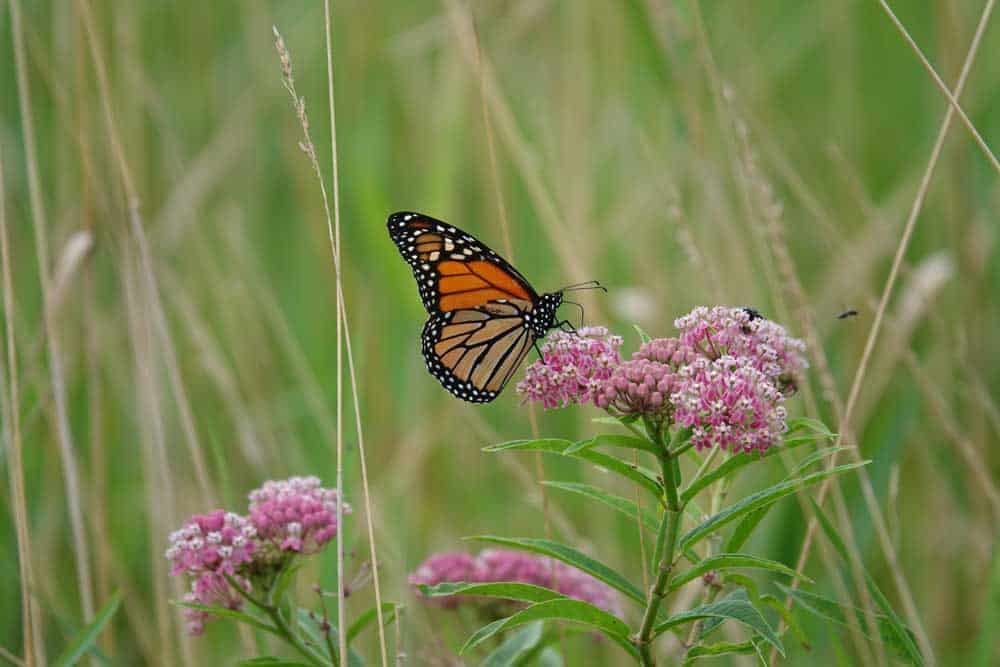
Monitoring for Pests and Diseases
Regularly monitoring your native plant garden for pests and diseases or alien species is important to ensure its health and well-being. If you notice any issues, address them using eco-friendly methods, such as introducing natural predators or using organic fungicides. Avoid using pesticides wherever possible, since pesticides tend to kill a broad variety of native insects and invertebrates as well. Remember, even the most “natural” insecticides will often kill more than the target insect. If in doubt, wait to see if the plant recovers; nature has a marvelous way of fixing problems in a well-balanced ecosystem when left alone.
Summary
In conclusion, native plants offer a wealth of benefits for both gardeners and the environment. If you grow native plants in your landscape, you can enjoy an eco-friendly space that supports birds and other wildlife, will save water, provides natural pest control without pesticides and typically little maintenance. From assessing local conditions and consulting landscape designers to selecting native plants that have a high likelihood of success in your garden design, then providing proper care, you can create a thriving, sustainable living space that benefits both you and the planet. So, why not embrace native plants and transform your outdoor space into beautiful, wildlife-friendly habitat today?
Frequently Asked Questions
Why plant native plants?
Using native species of plants for landscaping has numerous benefits, including reduced water usage, reduced maintenance costs, improved resilience to climate change, an increase in biodiversity, less noise and air pollution and fossil fuel use from maintenance, and better air and water quality. Since native species are well adapted to the local climate, they have generally high survivability rates.
Native species can also help reduce the spread of invasive plants, resulting in a healthier ecosystem. Native plants, even in combination with non-invasive exotic plants, provide a solid footing from which grow other wildlife relationships that strengthen overall ecosystem health.
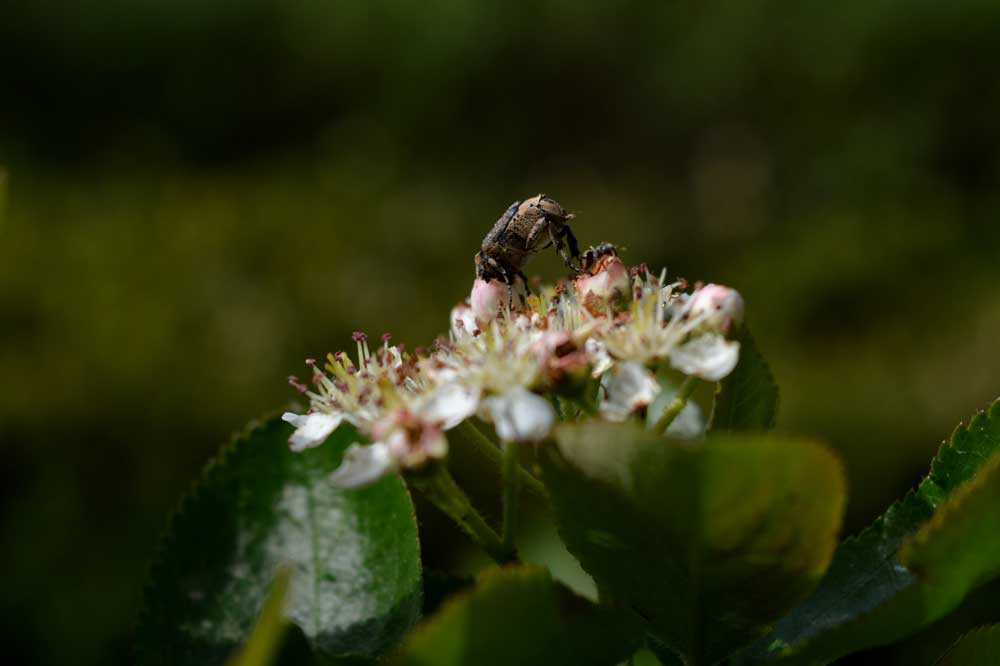
Why does planting native plants help the environment?
Planting native plants helps the environment by sequestering carbon, providing food and shelter for wildlife, promoting biodiversity, and improving air quality, all while lowering or removing the need for watering, fertilizer, and pesticides. Additionally, native plants can help decrease pollution by eliminating the need for mowers and other equipment.
What does it mean for a plant to be native?
A native plant is one that has evolved to occur naturally in a particular region and been growing in the area for thousands of years or longer, without human introduction. Native plants are local and can provide many more benefits to wildlife than exotic plants or cultivars, selections, and hybrids.
Does this mean that you can’t have both native plants and non-invasive, non-native plants in your garden? Not at all. It just means that the more native grasses and other ecoregion-specific plants you grow, the more biodiversity you will see. And the more support you will provide for the specialist relationships of butterflies and other invertebrates. Native plants provide the matrix for landscape and ecosystem health.
What are the disadvantages of native plants?
Being more biodiversity friendly sometimes means that if you grow native plants attract other wildlife, including small animals such as voles, mice, and rats. However a healthy population of raptors or other predators like foxes will help keep small mammals under control. (This is why it is important not to use rodent poisons, which are ingested by raptors.)
You may also find that your native plants feel out-of-place to neighbors. HOAs (Home Owners’ Associations) might have rules against the use of some native plants, or arrangements of native plants, though laws and regulations are changing. As always, the best tactics with those who question your native plant choices are friendliness and a willingness to educate. And being attentive to small details, such as adding borders and more traditional design elements, or even signs, will often make your wilder approach more palatable to neighbors.
What are some tips for choosing the right native plants for my garden?
Choose the right native plants for your garden by assessing local conditions, observing native plants in their natural habitats, and consulting Plant Wild and outside experts for advice.